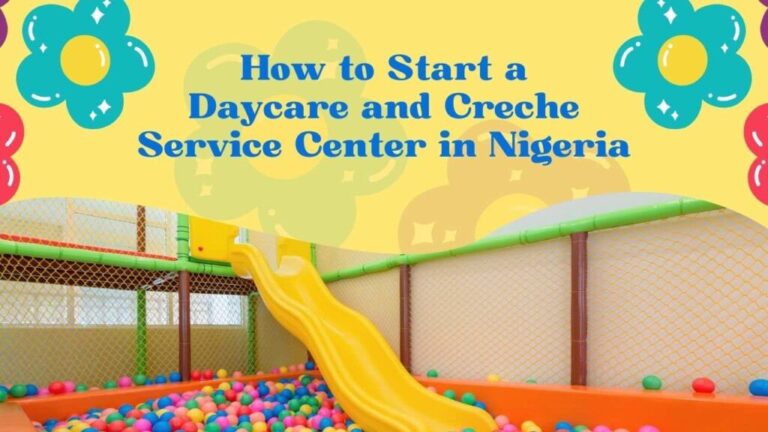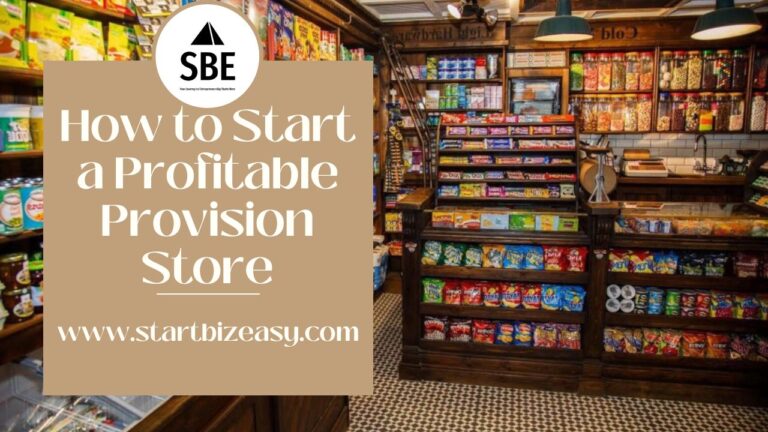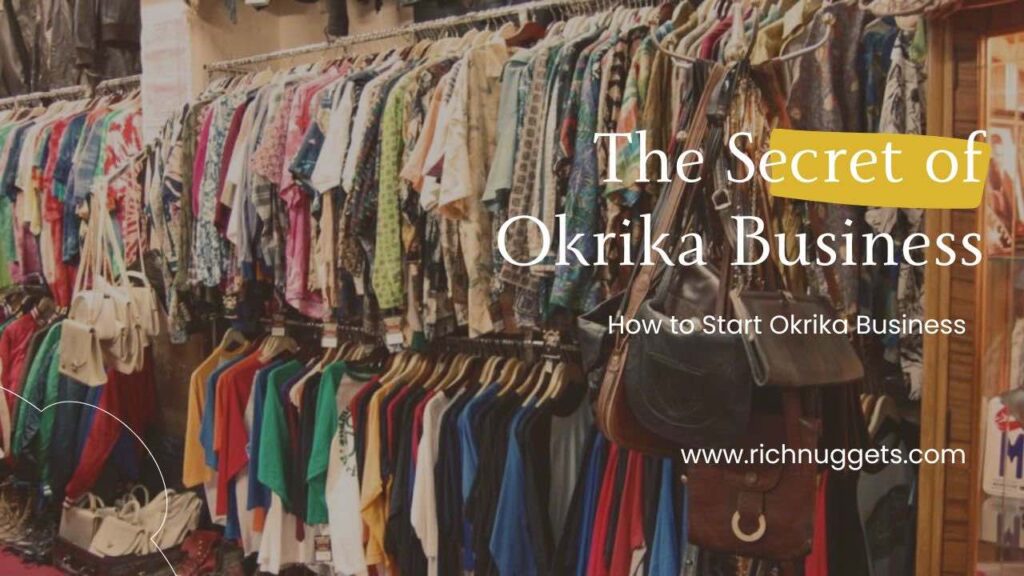
An Okrika business is a segment of the thrift business that focuses solely on selling second-hand clothes for profit.
Today, we delve into a captivating business topic where we will be unfolding the secret of Okrika business, where pre-loved fashion finds a new lease on life and opens doors to exciting opportunities.
Have you ever wondered how some individuals manage to rock stunning outfits without breaking the bank? The answer lies in the age-old yet thriving market of Okrika (also known as “second-hand” or “used”) clothing, a booming industry that remains shrouded in mystery for many.
But in this article, that mystery will be unveiled. So, stay glued as we unravel the secrete of Okrika business in Nigeria.
Table of Contents
How much can I use to start Okrika business in Nigeria?
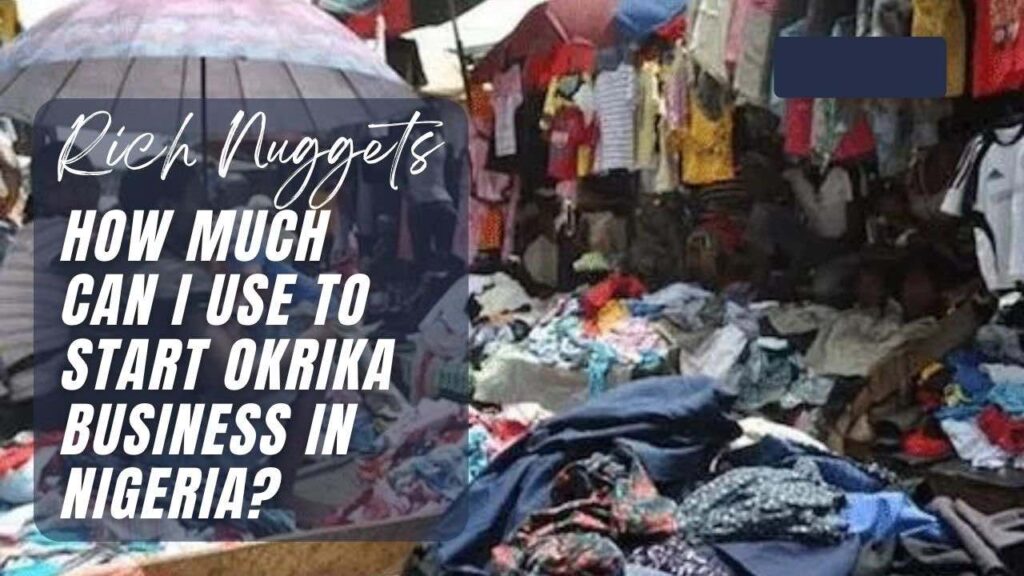
You can start a profitable Okrika business in Nigeria with a minimum sum of N30,000 Naira if you intend to buy from a bale of clothes rather than buying the whole bale of clothes.
But if your intention is to start this business with a bale of clothes, normally 100kg, then you should budget N100,000 Naira to N300,000 Naira.
The price of a bale is dependent of several factors such as;
- Age Group
- Gender
- Grade
- Country of Shipment.
Age Group:
Age group is a major factor in the price of a bale of clothes in the Okrika business. Bale for children’s clothes is more expensive, ranging from N250,000 to N300,000 for a 100kg bale containing about 300 pieces of clothes. On the other hand, an adult 100kg bale costs about N100,000 to N150,000 Naira, including around 170 pieces of clothing.
Gender:
In the Okrika business, gender primarily affects the pricing of adult clothes. For children’s clothes, the bales are usually mixed with both male and female clothing, as there isn’t much distinction in this age group. However, adult female bales tend to be slightly more expensive than male bales, likely due to higher demand from female customers.
Grade:
It is good to know that, even though the clothes in Okrika business are tagged or generally called used or second-hand clothes, they come in different grades such as;
- Grade A: Also known as first-grade clothes, they offer the best quality and appearance, almost like new clothes. As a result, they come at a higher price.
- Grade B: These are second-grade clothes, offering reasonable quality and appearance after Grade A. They can still be profitable for your Okrika business.
- Grade C: Also known as third-grade clothes. This grade represents the lower end of quality, with clothes that may be damaged or too oversized to find buyers easily. Buying Grade C bales might be inexpensive, that is very cheap, but selling them could be challenging.
To avoid unwanted surprises, always confirm with the seller whether a bale is Grade A or Grade B before purchasing. There’s a strict “No Return Policy” in this business among the wholesalers.
Country of Shipment:
The country of shipment also affects the prices of bales in the Okrika business. Bales from Asia (e.g., China, Korea) are generally cheaper but may have lower quality, with only a few meeting Grade A standards.
On the other hand, bales from Europe (particularly Germany and London) offer the best quality, often falling into the Grade A category, but they come in smaller bales (below 100kg) and are more expensive.
While from Benin Republic, Cotonou, you can get a bale of clothes in bigger Kgs and mostly in grade A because they make sure they rearrange the clothes before they sell to foreigners who come to buy from them. The cost of a bale from Cotonou can cost from N50,000 to N200,000. These prices are dependent on the bale Kg, age group, gender, and grade of the clothes.
How profitable is Okrika business?
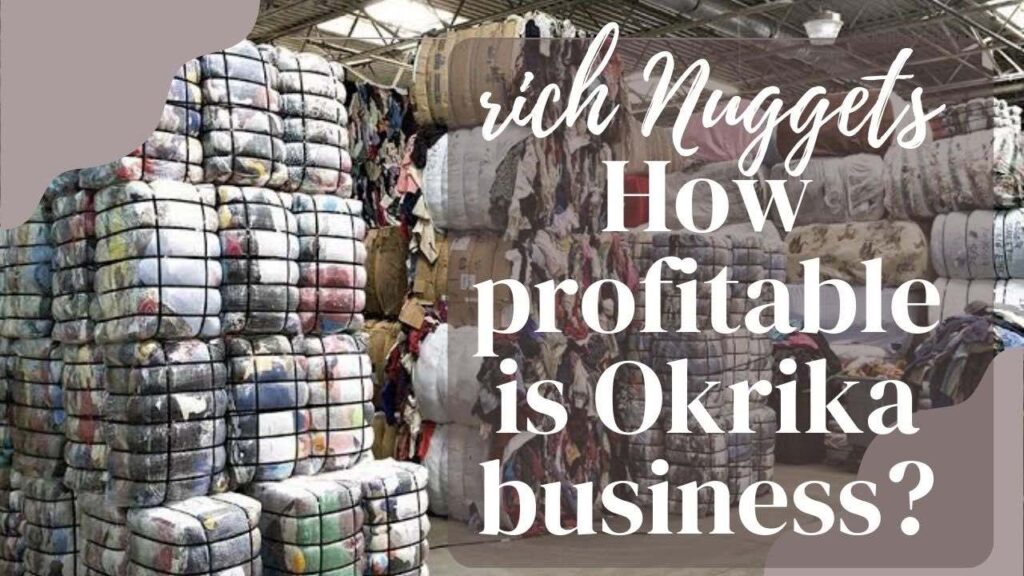
The Okrika business in Nigeria is undeniably profitable due to several factors that contribute to its success. These factors include Low Investment, High Markup, Diverse Customer Base, Repeat Customers, and Seasonal Opportunities.
With an Okrika business, you can invest a relatively small amount and enjoy high-profit margins. For example, selling children’s clothes from a 100kg bale (approximately 300 pieces of clothes) with each clothes being sold with the minimum cost of N1,500 and the maximum cost of N3,000 can yield gross profits ranging from N450,000 to N900,000. This demonstrates the substantial profit potential in the Okrika business.
However, certain factors can influence the profitability of the business, such as location, market demand, competition, pricing strategies, and the quality of products. To maximize profits and scale in this industry, it is crucial to address these factors strategically.
How to Start Okrika Business
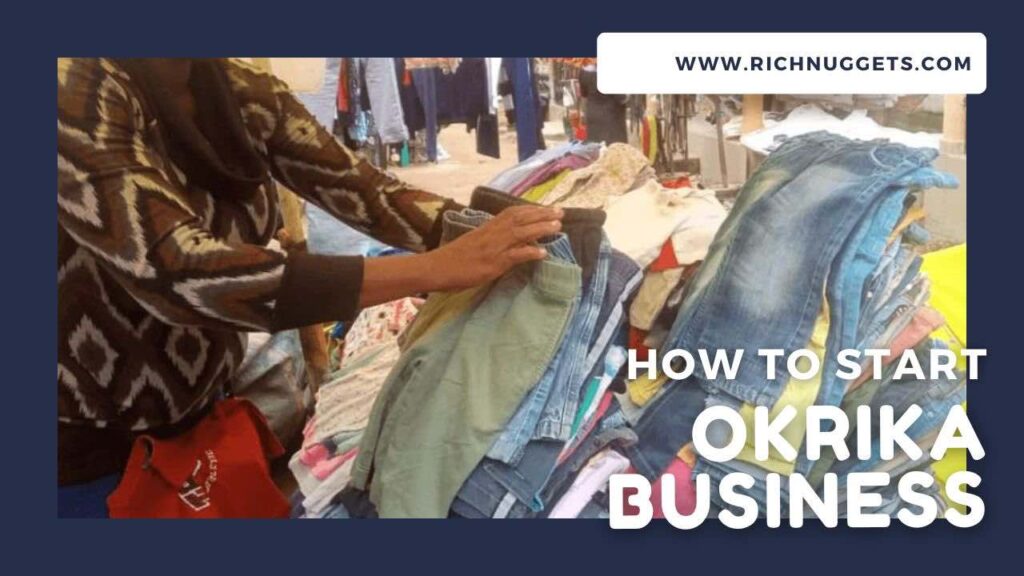
Step 1. Market Research:
Market research is a crucial step before starting an Okrika business. It involves gathering valuable information about the second-hand clothing market and its potential in your area or location you intend to operate in.
In conducting market research there are procedures that must be followed which include;
- Understanding the Demand: Generally the Okrika business attracts a high demand. But nonetheless, before diving into the Okrika business, you need to assess the demand for second-hand clothing in your area or your chosen location. Are people interested in thrift shopping? Is there a market for pre-loved fashion? Understanding the level of demand will help you gauge the potential success of your business.
- Identifying Target Audience: Every business caters to a specific group of customers. In the case of Okrika, you need to identify your target audience—Consider demographics such as age, gender, income level, and lifestyle choices. While it’s true that children’s clothes generally sell more in the Okrika business, it’s also crucial to be mindful of the competition. If you find yourself in an area with a saturation of children’s clothes sellers, it might be wise to focus on the adult age group instead, especially if you lack the capital to challenge the existing competition effectively.
- Market Size and Competition: Analyze the size of the Okrika market in your area and assess the level of competition. Are there already established thrift stores? Understanding the competitive landscape will help you identify gaps in the market and potential opportunities for differentiation.
- Location and Accessibility: When it comes to Location, research the best location for your Okrika business by considering foot traffic, accessibility, and the demographics of the area. Remember to have an open mind as your preferred location may not be the best location in terms of demand-pull.
- Price Sensitivity: Okrika business thrives on affordability. Research the price sensitivity of your target audience. What price range are they willing to pay for second-hand clothing? Strike a balance between affordability and profitability to attract and retain customers.
A well-researched approach will increase the likelihood of success and help your Okrika business thrive in a competitive market.
Step 2. Legal Requirements
Starting an Okrika business in Nigeria doesn’t involve many legal requirements. However, depending on your operating location, there are certain considerations you should keep in mind.
If you plan to run your Okrika business from a physical shop, it is advisable to register your business as a business name. Doing so can help you minimize unwanted disturbances from tax collectors and ensure a smoother operation.
On the other hand, if you intend to sell your Okrika products in an open space, such as a marketplace, formal registration might not be necessary. Still, it’s essential to collaborate with the tax collector authorities in that location to avoid potential disruptions. This collaboration may involve paying for the space you intend using, particularly if it is designated as a prohibited business space. Additionally, you might need to pay a daily fee or buy daily tickets to operate there regularly.
However, if you choose to sell your Okrika products from your own house, you are less likely to encounter legal issues, especially if you are operating on a small scale. In such cases, the need for formal registration may not be as significant.
To register your Okrika business name, you can visit the Corporate Affairs Commission (CAC) website or consult with an accredited CAC agent for assistance.
Step 3. Sourcing Suppliers:
When it comes to sourcing suppliers for your Okrika business, you have two main options: buying locally or internationally.
Locally refers to purchasing within Nigeria, where you can find reputable wholesale dealers of Okrika clothes in various states and markets across the country.
Traveling all the way to Alaba International Market in Lagos to buy Okrika clothes might not always be the most cost-effective option, especially when considering additional expenses incurred in the process. In such cases, buying from local dealers in your state may prove more advantageous, unless you deal in larger quantities and wish to capitalize on the discounts available at renowned markets like Onitsha market, Balogun market, Tejuosho market, Katangowa market, Idumota market, Okrika market, Aba international market, and Alaba international market.
In addition to sourcing your Okrika clothes locally, you can patronize major players in the thrift business who source and ship items from foreign countries to Nigeria.
On the other hand, if you prefer to source your Okrika business internationally, you can consider buying from Cotonou or Europe, particularly Germany and London. It’s essential to note that purchasing from other locations, especially in Asia, might not always guarantee the best quality.
Step 4. Store/Shop Setup:
This is only necessary for those who consider it right to open a shop for their Okrika business. Store setup is a crucial aspect of creating a successful and inviting environment for your Okrika business. It involves carefully selecting the right location and designing a store that appeals to your target audience. Whether you’re operating on a limited budget or a bigger budget, a clean, organized, and visually appealing shop can attract more customers and enhance the overall shopping experience.
Here is how you can get and create the perfect shop for your Okrika business;
- Choose a location that is easily accessible to your target audience.
- If you have a limited budget, opting for a small retail space can be a prudent choice.
- Regularly clean and tidy up the store, ensuring that the clothing items are neatly displayed and arranged.
- Use display racks, shelves, and mannequins to showcase the clothing items attractively.
- Ensure sufficient and well-placed lighting that highlights the clothing items and makes the store inviting.
- Incorporate your brand identity into the store setup through signboard, logos, and color schemes.
- If your store allows customers to try on clothing, provide clean and comfortable fitting rooms.
- Train your staff to provide excellent customer service if you have any.
- You can give discount sales, or loyalty programs, to attract customers and encourage repeat visits.
Remember that the store setup reflects the personality of your Okrika business.
Step 5. Marketing
The thrift business demands minimal investment in marketing efforts. Instead, the key lies in building a solid reputation based on the quality of your clothes and offering a diverse range of options that attract customers to make purchases from you.
If you operate your Okrika business from a physical shop, enhancing its appeal through cleanliness and well-organized arrangements will undoubtedly entice buyers to return to your store and recommend it to their friends.
In essence, success in the thrift business comes from focusing on the excellence of your products and creating a welcoming shopping environment that fosters customer loyalty and word-of-mouth recommendations.
KEY RESOURCES:
- How to Start a thrift business in Nigeria (The Complete Guide)
- How to Start a Small Clothing Business from Home in Nigeria
- How to Register a Business Name in Nigeria in 7 Easy Steps
Final Thoughts on Starting an Okrika Business
The secrets to a successful Okrika business, include conducting market research, fulfilling legal requirements, sourcing suppliers, setting up a store or shop, and effective marketing. By ensuring these steps are well-executed, you can confidently anticipate enjoying the amassed wealth that comes with running a thriving Okrika business.
Remember to turn on the Bell 🔔 Notification Icon to get updated on your device when new articles are published.
If you have any questions or contributions leave them in the comment section below
Discover more from StartBizEasy
Subscribe to get the latest posts to your email.
